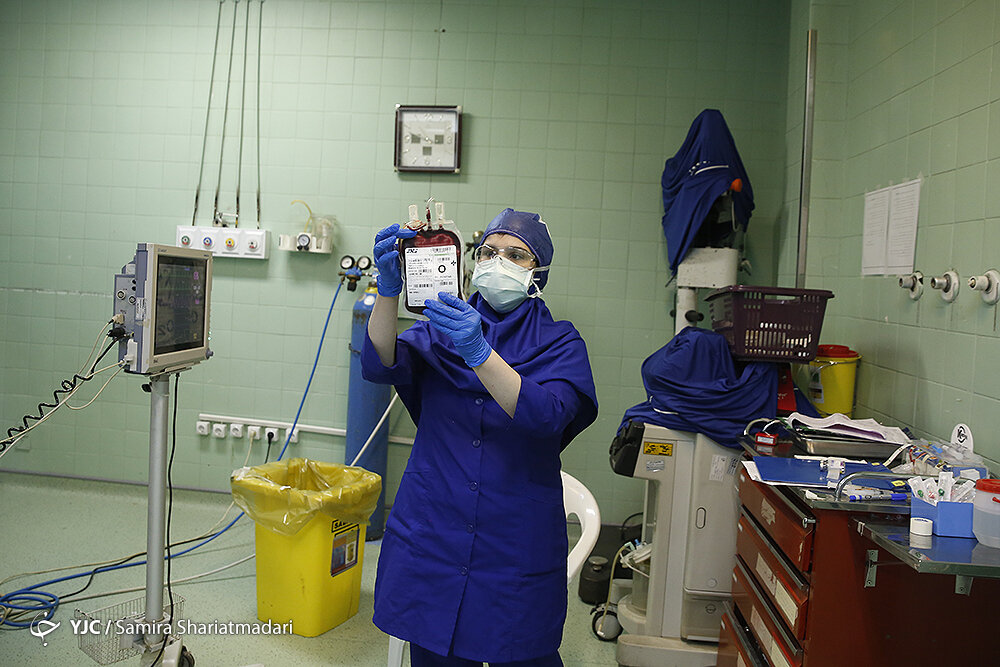TEHRAN – While blood donation in 70 countries still depends on replacement or paid donors, Iran is the first country in the region that has enjoyed voluntary blood donation by 100 percent since 2007.
It should be noted that today, with the expansion of the national blood supply network, the fair distribution of safe blood and its products is a great achievement, Bashir Hajibeigi, a spokesman for the Blood Transfusion Organization said on Sunday, marking the World Blood Donor Day which is held every year on June 14.
The obvious need for blood supply anywhere in the country can be easily met, he highlighted, adding, today, the quality-assured blood supply and its products are admirable in the country, as the quality of donated blood in Tehran is the same as those in the most remote areas of the country, ISNA reported.
More than 85 percent of all donated blood worldwide is used to produce blood products, while the rate is 65 percent in Eastern Mediterranean countries. Iran ranks among the highest-income countries in terms of converting more than 97 percent of the blood donated by people to plasma-derived medicinal products (PDMP), he emphasized.
Only 55 of 171 countries produce PDMP through the fractionation of plasma collected in the reporting country. A total of 90 countries reported that all PDMP are imported, 16 countries reported that no PDMP was used during the reporting period, and 10 countries did not respond to the question, according to WHO.
He went on to note that Iran currently has the highest blood donation rate in the Eastern Mediterranean region; So that out of 9.9 million blood donation units in this region, more than two million belongs to Iran.
Also, the index of blood donation is 25 per 1,000 populations; While in the member states of the Eastern Mediterranean region, this number is 14.9 per 1000, he stated.
Risk of blood unsafety almost zero in Iran
Blood safety in Iran is nearly 100 percent and the risks of blood transfusion are almost zero, Hajibeigi said.
All blood donations are screened for infections before use by the screening of first-time blood donors, vaccination of continuous donors against hepatitis B, and increasing the quality of screening tests and new laboratory methods, he also noted.
Although access to safe blood is still a privilege of the few, Iran's blood safety is on par with European countries and higher than the United States, he highlighted.
It should be noted that last year, the continuous blood donation index has reached nearly 60 percent, he stated, adding, the Continuous Blood Donation Index is one of the indicators of the promotion of blood transfusion centers in the world.
Even in some provinces of the country, such as Semnan, the index reaches up to 80 percent, he also highlighted.
World Blood Donor Day
World Blood Donor Day is celebrated across the world to raise awareness about safe blood donations and to thank those who voluntarily donate blood to save the lives of others.
The day is celebrated on June 14 to mark the birthday anniversary of scientist Karl Landsteiner who won the Nobel Prize for his discovery of the ABO blood group system.
Donating blood is not only a good cause but it also has some benefits on health. For example, donating blood can protect your heart as doing that at regular intervals can reduce the viscosity of your blood. Notably, increased viscosity can limit the blood flow to the heart and can cause organ failure or a heart attack.
Blood safety and availability
According to WHO, of the 118.5 million blood donations collected globally, 40% of these are collected in high-income countries, home to 16% of the world’s population.
In low-income countries, up to 54 % of blood transfusions are given to children under 5 years of age; whereas, in high-income countries, the most frequently transfused patient group is over 60 years of age, accounting for up to 75% of all transfusions.
Based on samples of 1000 people, the blood donation rate is 31.5 donations in high-income countries, 15.9 donations in upper-middle-income countries, 6.8 donations in lower-middle-income countries, and 5.0 donations in low-income countries.
An increase of 7.8 million blood donations from voluntary unpaid donors has been reported from 2013 to 2018. In total, 79 countries collect over 90% of their blood supply from voluntary unpaid blood donors; however, 56 countries collect more than 50% of their blood supply from family/replacement or paid donors.
TAGS


No comments:
Post a Comment